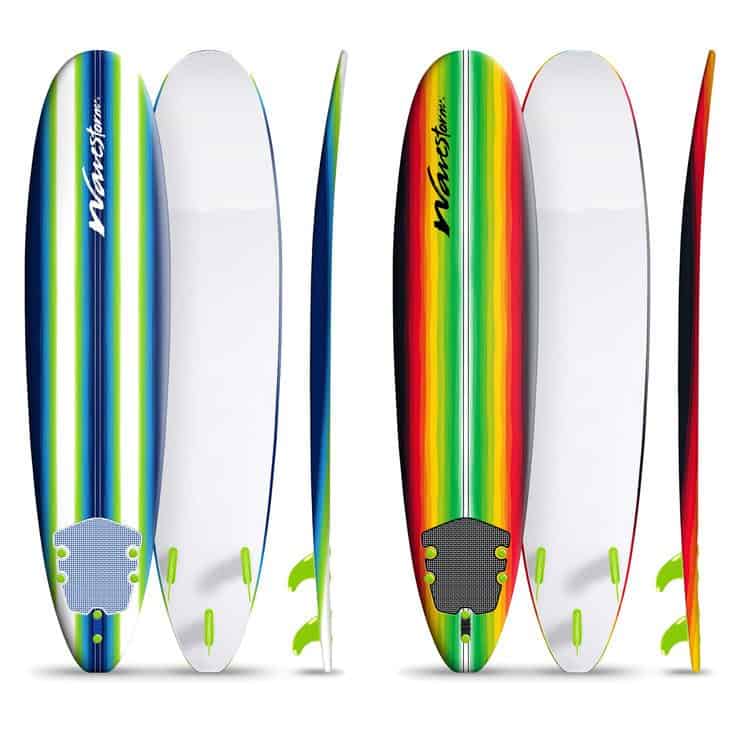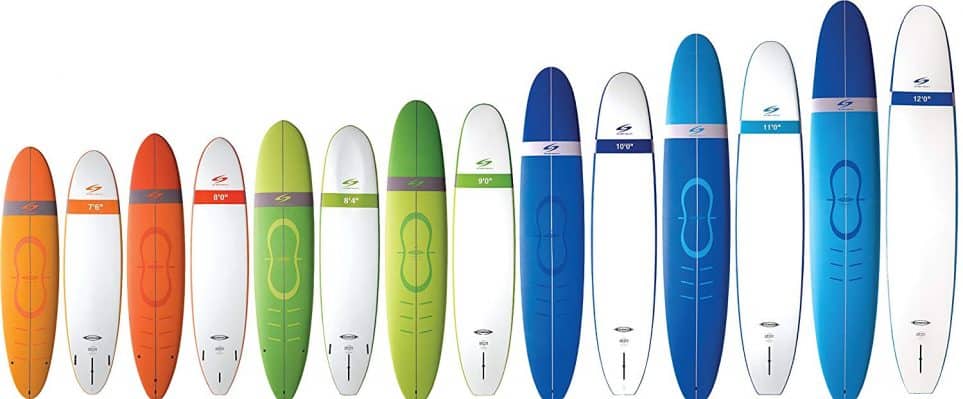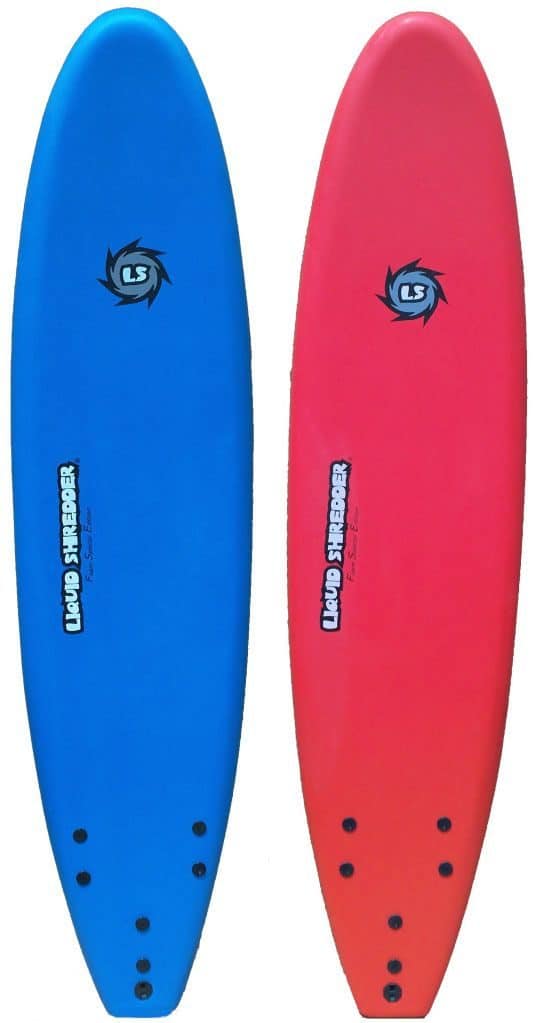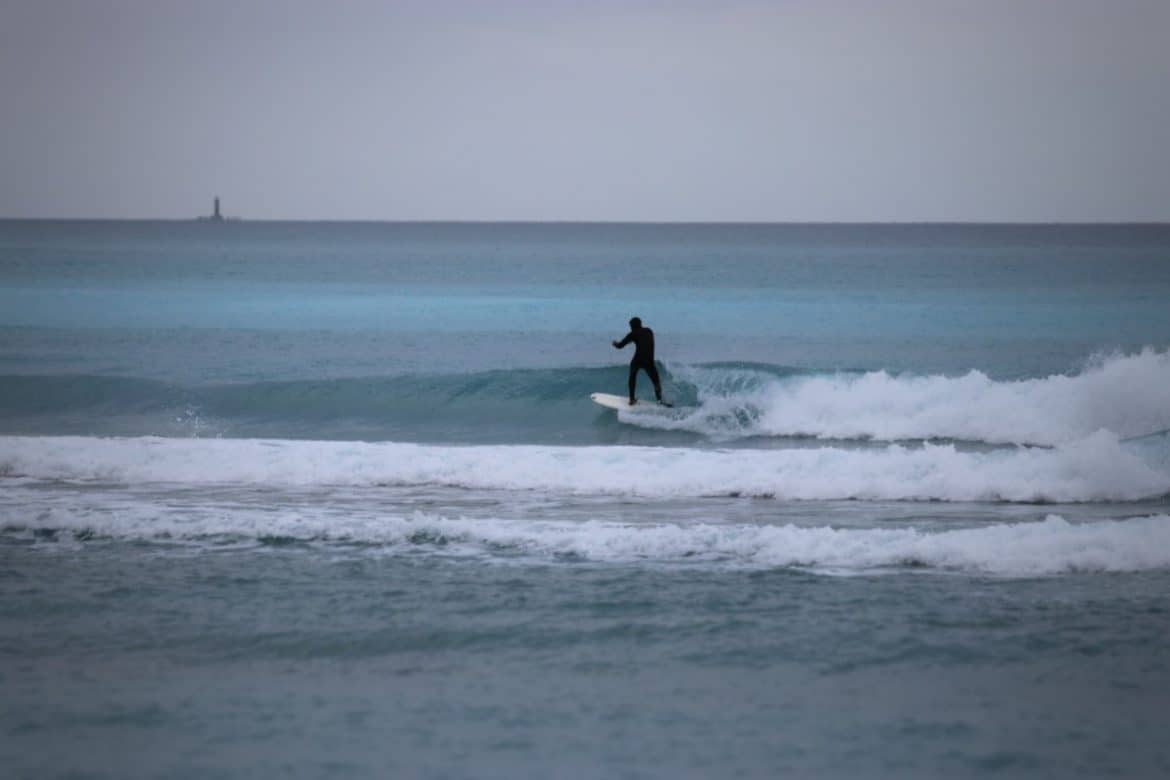Who is this guide for: a beginner surfer looking to find the right board to catch and ride more waves on and for surfers progressing out of the complete beginner phase and looking for a board to upgrade to.
As a stoked novice or beginner surfer, finding the right board among all the surfboards for beginners and also the right conditions can make or break your success rate and enjoyment. The surf conditions are never really completely in your control although choosing the right surf destination can help a lot. But in this guide we will focus on what you can control – beginner board choice. For example, riding a fiberglass board with not enough volume can be a very frustrating experience when you are just developing your paddling skills. Or trying to ride a smaller, thinner and high performance board before you are ready can actually stunt your progress. It can even result in you simply giving up in frustration thinking that surfing is not for you.
Some beginners like smaller boards, shortboards because they look better, they don’t make it obvious that you are a beginner and often the mindset is – if I am getting a board I will get one that I can also use later on. I will struggle a little at first, but I will be able to use my board when I learn how to surf. This might work in some other sports where professional equipment in actually better, lighter and easier to use. But it does NOT work this way in surfing. 99% of surfers will not progress out of the beginner phase on the wrong board. They will just loose interest and stop trying.
It is quite common for beginner students to race into the line up, chomping at the bit to ride a wave all the way down the line, like in the surf movies, on their very first attempt.
What a lot of them don’t realize is how tough learning to surf really is, and how the right board and conditions can make or break their success rate when it comes to wave catching and wave riding. The challenge of learning to surf it is truly what weeds out surfers who won’t stay committed and those who will, and really brings devoted ocean enthusiasts to the mix. That’s part of the appeal of this sport!
If you are part of this fired up community (let’s face it, surfing becomes an obsession), then you need to give yourself time, grace, and the proper equipment to progress. First things first, make sure you get to the beach on a regular basis, and secondly, choose the proper board! You can never catch TOO many waves, so starting bigger is always going to grant you more forgiveness in the water. It really is essential that you get the right board when you are starting out. And you are in luck. There are plenty of soft/foam boards and fiberglass boards made just for you. So…
Table of Contents
How to Choose the Right Beginner Board?
Some things to keep in mind when choosing your first board from the surfboards for beginners quiver:
BOARD SIZE
Bigger is better! Start with something around 7 foot or above depending on your height and weight. A general rule of thumb is that smaller surfers should ride a 7 or 8 foot board and larger people a 9 or ten foot board. One additional thing to consider is – are you able to carry the board when you leave the surf shop, if you are purchasing the board to take home. Some boards over 9 feet are too wide for some surfers to carry on their own. So make sure you can reach the boards edge when it is under your arm so you can carry it around.
BOARD VOLUME
As long as you can carry your board to the beach and transport it, the more volume will be helpful when trying to catch and ride waves. Why? Much less wave knowledge, positioning skills and paddle power is needed for a longer board with lots of volume to catch a wave. So when you are starting to surf volume is your friend. Volume for sure goes up together with the size of the board, but two same size surfboards can have different volume.
SAFETY
A few things about your surfboard to keep in mind to minimize the amount of risk involved with learning how to surf.
- It is better to start with a softboard than with a fiberglass surfboard. Soft surfboards are made out of foam or covered with foam so they do less damage if they hit someone.
- You should always wear a leash! You will be losing your board a lot as a new surfer and you don’t want it hitting you or anyone else. Make sure your board has a leash plug and get a good leash. What is a good leash? Mainly one that feels comfortable around your ankle and that it is new so the Velcro tape works as it should.
- Another item that can improve safety are soft fins. Fins are the most dangerous object on your surfboard, they are like small knifes attached to the tail of the surfboard. Hitting a fin never ends well. Soft plastic fins are much safer. They aren’t that great for maneuverability, but will certainly keep you and your surfer friends safer when you lose your board or wipeout.
What Brands of Boards are Best for Beginners?
There is a huge amount of different beginner surfboard brands out there so it is impossible to know and list them all. Here you will find three established and well known soft surfboard brands. Getting a beginner surfboard from one of these you can be sure you are getting a good and beginner suitable surfboard. For more in depth info on soft boards check out this foam surfboards buyers guide.
WAVE STORM

Wave Storm’s for example, are made from light foam material and very affordable (under $200). They are available with a thruster set up (with more forgiving fins) and a squash tail for easy wave catching. That being said, they are not a good high performance board if you want to practice turning.
SURFTECH

Surftech Learn2Surf 9 footer is a heartier version of the above board and is worth the higher price ($800) if you plan to spend more time on it. It has multiple stringers to keep it strong and reinforced rubber bumpers in the nose and tail. It is a bit easier to turn than the Wave Storm, but still not a high performance choice if you are looking to start doing real top turns and cutbacks. But don’t worry about that, when you progress to that level you will want to buy a different board. Your old beginner surfboard will still be useful for those small summer surfs.
LIQUID SHREDDER

This is a good board that is in between the price of the two mentioned above. Because it is a bit smaller (7 feet) it is good for kids, smaller surfers, and those wanting to get through waves easier and possibly turn down the line more. This has a similar tail set up to the two above.
Progressing Out Of Soft Beginner Boards, What Board Should You Get Next?
What about a when you want to start progressing to a fiberglass or smaller board? Here are some things to keep in mind. If you want to progress to a fiberglass board or shorter board with fiberglass fins and sharper rails, first you need to figure out if you are ready for this step. These are the skills you should have before you make the transition:
- You should be able to paddle out into a line up by yourself (depending on the conditions of course),
- You should be able to turn around and catch waves by yourself,
- You should be able to pop up regularly,
- You should be able to do a bottom turn,
- You should be able to surf frontside and backside after making the bottom turn.
Once you are able to regularly (meaning a few times each surf session) ride the wave frontside or backside it is time for a new board. This is where the world of surfboards really opens up. There are so many different shapes of surfboards for different surf conditions and for different styles of surfing. You can find a complete list of different types of surfboards here, together with explanations why and when they are used. If you want to really understand how different surfboard shapes influence how the board handles in the water check out this surfboard design guide.
Since you are just progressing out of long beginner boards with lots of volume you still do not want to jump straight into the high performance shortboards. Volume and size is still your friend helping you to catch more waves and progress faster.
What to Look for in Advanced Beginner Surfboard?
BOARD SIZE
Depending of your height and weight and the shape and volume of the board you should get a board somewhere between 6 and 7 feet. It should be shaped like a shortboard but with a wider tail and nose so it has more volume.
BOARD VOLUME
Look for boards that are meant for bigger heavier surfers, for boards that are hybrids between shortboards and mini mals, look for small wave summer boards. All these boards will give you comparatively more volume for their size helping you catch waves easier.
Keep in mind that the importance of volume is a bit exaggerated these days. It is just one number out of many characteristics that determine how the board rides. Shape, rocker etc… are just as or even more important. However if you are not comfortable with board shapes and measurements then surfboard volume is a useful estimate of what kind of board should you get.
How to Choose an Advanced Beginner Surfboard Using Volume?
There are some online surfboard volume calculators (click for a list of the best ones) that you can use to estimate what your surfboards volume should be. Depending on the calculator you will have to enter your weight/height/age/fitness level and surfing level and the volume calculator will give you an estimate of you ideal volume size. Then you can take this volume number and check different sizes of a surfboard model that you like.
For instance, if your given volume is 30 liters, then you can check the volumes of different sizes of the board you are looking at. You will see that for instance a 5’10” board will have 27 liters; a 6’2” might have 30.7 liters etc… This way you can choose the correct board length as well as volume.
IMHO this should be however your backup plan. The surest way to get the right board is to consult your shaper or your local surf shop.
Surfboard Volume and Duckdiving
One more thing to consider when getting that advanced beginner surfboard. Until now you were not able to duckdive your board because it was too long and with too much volume. But as you progress on to a smaller board and as you get better in surfing, duckdiving will be an essential and quite difficult skill you will need to master. Obviously the more volume the surfboard has, the more difficult it is to push it under the wave. But what is the limit, what is the maximum volume that a surfer can duckdive comfortably?
You can help yourself using this equation
Maximum comfortable duckdive volume = your weight in kg / 1.8 – 2
Example:
80 kg surfer can comfortably duckdive a surfboard with around 40 – 44 liters. 80/1.8 = 44 and 80/2 = 40.
How well a surfboard duckdives also depends on the shape of the surfboard. A wide round nosed surfboard is harder to push underwater than one with a pointy nose, even at the same volume.
If you have any questions, the comments are opened.

